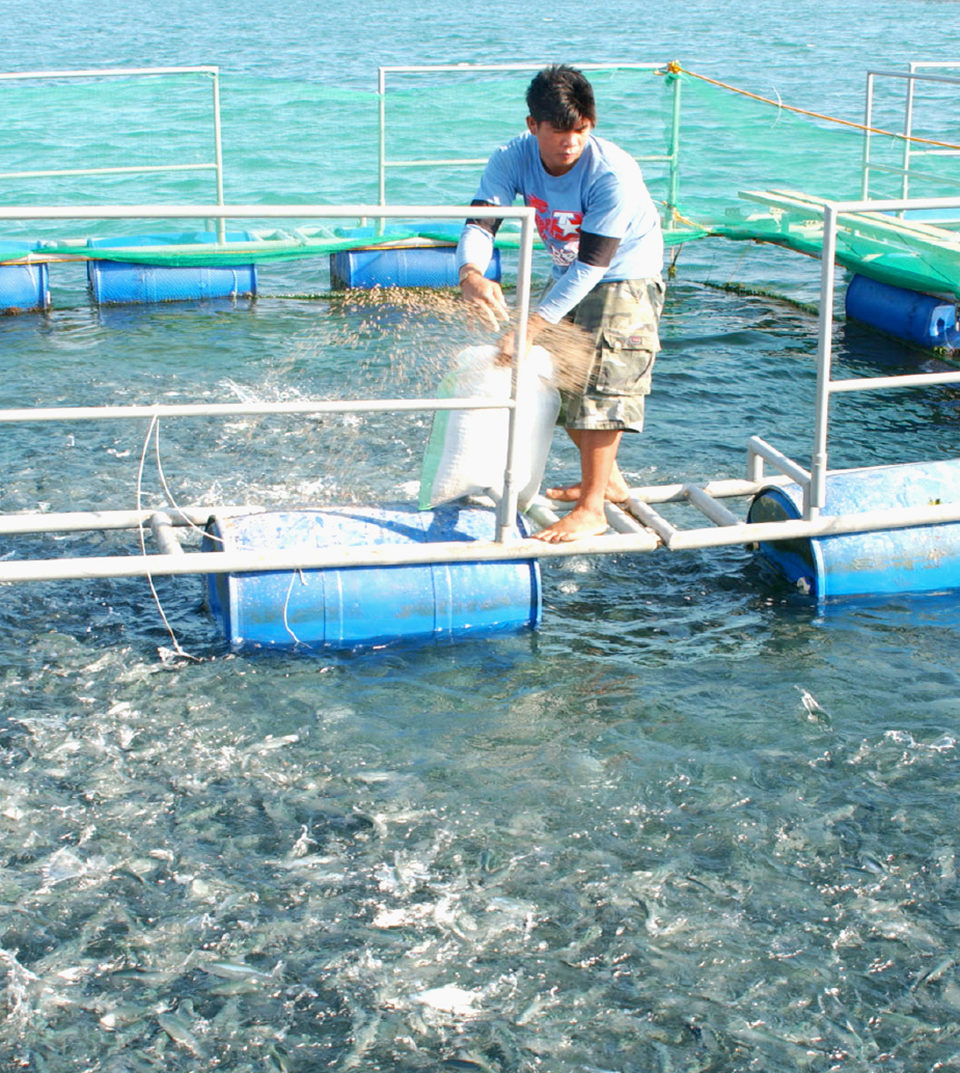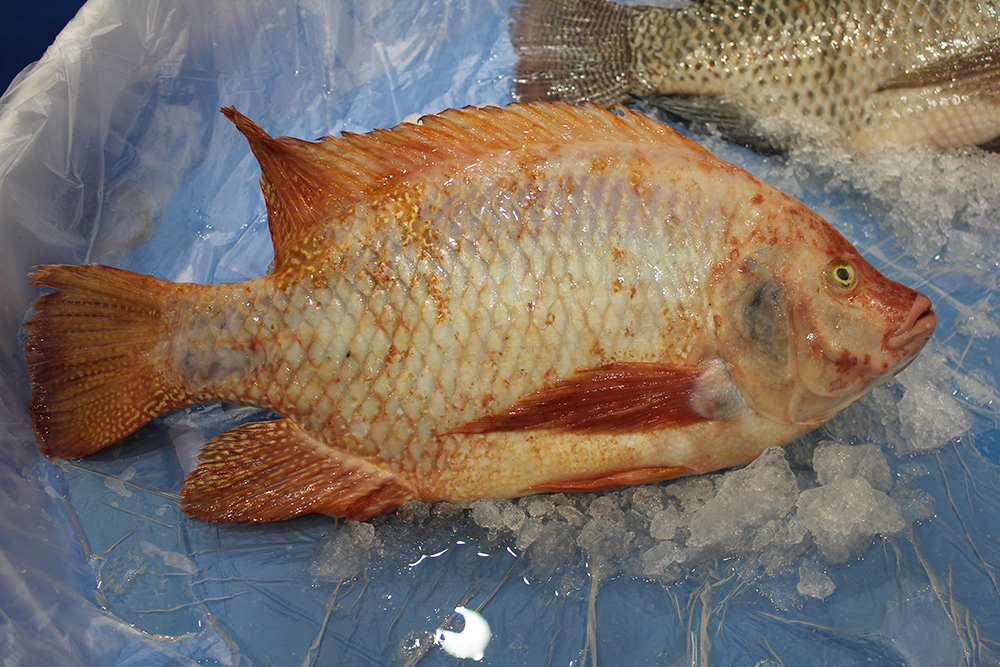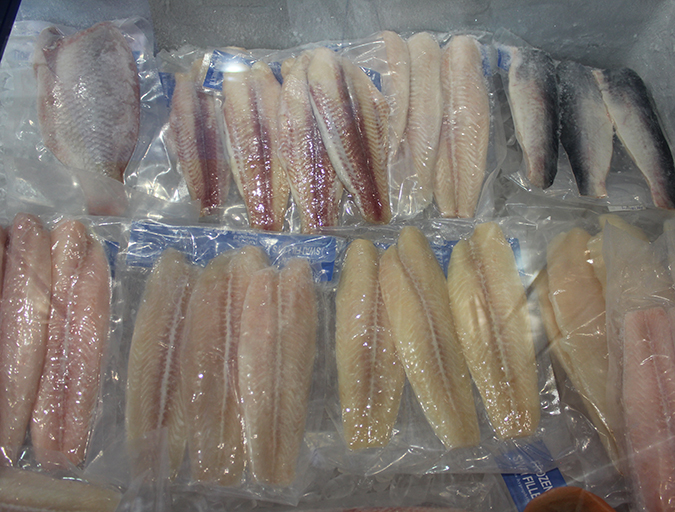AquaFish Innovation Lab is helping vulnerable populations build pathways out of poverty

Rapid growth of the global aquaculture industry is driving greater demand for processed fish feed and its constituent ingredients. Any increase in the market price of these ingredients has a significant negative impact on the operating costs of aquaculture throughout the world.
Volatility in the prices of fishmeal and other globally traded commodities, particularly crops like wheat and maize, places a heavy burden on farmers. In addition, feed prices are further affected by fluctuating prices for petroleum fuels and other transport costs.
For small-scale fish farmers in developing nations, rising feed and related costs are often too high to be absorbed into already-thin profit margins. In small-scale aquaculture operations, feed can account for 80 percdnt or more of total production costs. When faced with an increase in feed costs, many poor farmers may have no other choice than to stop feeding their fish.
The AquaFish Innovation Lab, a collaborative research program funded by the United States Agency for International Development and participating U.S. and host country universities and institutions, seeks to provide better options for small-scale fish farmers who are vulnerable to fluctuations in feed costs.
Feed less
An intuitive way to reduce overall production costs is to feed fish less food during growout. However, feeding less while achieving similar yield is a challenging enterprise.
In 1982, the Pond Dynamics/Aquaculture Collaborative Research Support Program (PD/ACRSP) began researching methods for optimizing pond productivity for growing fish to market size. Researchers from the United States partnered with scientists at the Asian Institute of Technology in Thailand to develop a unifying strategy for optimizing the technological and economic efficiencies of pond production systems.
Pond fertilization to increase fish yields has long been practiced throughout the world in the culture of planktivorous fish. When carefully managed, an aquaculture pond will provide naturally produced food items to fish, thereby reducing the need for supplemental feeding.
The success of this approach depends in large part on using best management practices for small-scale pond culture – which means not overfeeding fish or overfertilizing the ponds. This approach to optimizing pond production is referred to as “greenwater technology” by the AquaFish Innovation Lab at Oregon State University because of the greenish color of phytoplankton blooms in fish ponds, which indicates a high level of primary productivity.
Pond management
Good pond management techniques have been a focal point of AquaFish-sponsored research since its inception, when PD/ACRSP began promoting greenwater technology for small-scale pond culture in developing countries. The advantage this conveys to farmers is realized as increased production without increased costs. AquaFish researchers found that farmers using greenwater technology in suitable locations can produce up to 7,000 kg fish/ha/year with optimal fertilizer inputs.
A culture operation that uses supplemental feeds in addition to naturally produced in-pond food items can potentially increase yields well above these production levels – up to 30,000 kg/ha/year, surpassing farms that spend much more on feed inputs. This approach is not only more cost-effective, but it is also more sustainable, because it reduces the amount of eutrophic effluent that results from overloading a system with excess feed nutrients from entering the surrounding environment.
Feeding alternate days
PD/ACRSP has helped pioneer another innovative way to feed less. By feeding fish on alternate days, fish farmers can effectively cut feed costs in half while dramatically increasing the feed-conversion ratio (FCR) of the fish crop.
Dr. Remedios Bolivar from Central Luzon State University in the Philippines conducted feed trials in a collaborative research effort with scientists from North Carolina State University and Florida International University in the United States. This research compared tilapia, Oreochromis niloticus, reared in freshwater ponds and fed on alternate days with fish fed a normal daily ration. The alternate-day feeding regime achieved FCRs close to 1 and reduced the amount spent on feed by 40 percent, while producing fish of generally similar size.
Building upon the success of alternate-day feeding with tilapia, Bolivar and the PD/ACRSP research team turned their attention to milkfish, Chanos chanos, a euryhaline herbivore grown throughout Asia. As well as being the national fish, milkfish is the foremost food fish produced by volume and product value in the Philippines.
Most milkfish culture takes place in brackishwater ponds or marine net pens, where eutrophication of surrounding waters from intensive culture practices has generated environmental concerns. These problems result from overstocking and overfeeding, which create a greater reliance on commercial feeds and poor FCRs above 3 for milkfish farmers.
The PD/ACRSP team compared milkfish raised in marine cages and fed on alternate days with fish fed a normal daily ration. The alternate-day feeding trials produced fish of similar size while achieving an FCR of 2.25 and savings of 31.7 percent on feed, compared to the daily feed regime (Table 1).
Price, Results of milkfish feeding trials, Table 1
| Category | Daily Feeding* | Fed on Alternate Days |
|---|
Category | Daily Feeding* | Fed on Alternate Days |
|---|---|---|
| Initial body weight (g) | 29.55 ± 6.02 | 31.76 ± 6.15 |
| Final body weight (g) | 303.00 ± 4.51 | 277.00 ± 8.65 |
| Weight gain (g) | 273.00 ± 1.67 | 245.00 ± 10.28 |
| Culture period (days) | 135 ± 12.66 | 170 ± 5.55 |
| Growth rate (g/day) | 2.06 ± 0.20 | 1.44 ± 0.04 |
| Survival (%) | 83.12 ± 1.27 | 88.69 ± 3.65 |
| Biomass harvested (kg) | 630 ± 6 | 615 ± 42 |
| Total feed applied (kg) | 2,015 ± 37 | 1,375 ± 10 |
| Feed-conversion ratio | 3.20 ± 0.06 | 2.25 ± 0.15 |
| Total feed cost | 54,408 ± 994 (U.S. $1,224.59 ± $22.37) | 37,119 ± 274 (U.S. $835.50 ± $6.17) |
| Savings on feed cost | 17,289 (U.S. $389.13) | |
| Savings on feed cost (%) | 31.7 |
Table 1. Results of milkfish feeding trials in marine cages.
This simple technology is easy to implement and requires very little training, making it an ideal option for small-scale farmers vulnerable to increases in feed costs. Furthermore, this strategy helps reduce organic loading around net pens, and decreases the eutrophication that can occur with intensive marine aquaculture.
Feed differently
Another method for reducing feed costs is to feed fish differently during growout. This includes utilizing product substitutions in feeds through alternative sourcing of feed ingredients, increasing the nutritive content of feed to grow healthier fish with better FCRs, and improving locally produced, low-cost feeds by the process of pelletization.
In Tanzania, fish farmers rely largely on naturally available feedstuffs for supplementing the primary productivity of aquaculture ponds, including rice and maize bran, kitchen leftovers and garden remains. The lack of proper nutrition in these types of supplemental feeds means the fish grow slower and are not as healthy as fish raised on a properly balanced, nutrient-rich diet. Without readily available or affordable processed feeds, however, the farmers are left with few options for improving the yields of their operations.
Alternate proteins
To address this problem, Dr. Sebastian Chenyambuga and researchers from Sokoine Agricultural University in Tanzania partnered with scientists at Purdue University and the University of Arkansas at Pine Bluff in the United States to develop alternative protein sources for tilapia diets using two native tree species, Moringa oleifera and Leucaena leucocephala.
After conducting on-farm trials using protein substitutes derived from nutrient-rich leaf meals of these two trees, researchers found that fish fed Moringa leaf meal grew the same as fish fed soybean meal. As a result, this research helped create options for small-scale farmers who can use this widely available, native tree species to improve their supplemental fish feed and thereby improve the health and growth of their crops.
In neighboring Kenya, a lack of quality pelleted feeds is a primary constraint to the aquaculture industry and a chief determinant of the ability of small-scale fish farms to generate income for households. Several diet formulations for tilapia culture in the region are sold as a powder mix to be broadcast on the surface of ponds. These diets produce an FCR of around 4 at best, and the formulations may not be ideal for tilapia health and growth.
Now, the AquaFish Innovation Lab is sponsoring research led by Dr. Charles Ngugi from the Kenya Ministry of Livestock and Fisheries, in partnership with scientists from Eldoret University and the University of Arizona, to develop a practical tilapia feed from locally available ingredients using feed formulation software. But simply determining ideal formulations won’t necessarily improve FCRs at fish farms.
To help reduce feed waste and improve feeding efficiency, the research team will obtain a low-cost grinding mill, mixer and pelletizer to make pelleted feed using the formulation they develop. This approach presents a good alternative to importing costly commercial feeds, as pelletizing feeds is expected to increase fish production at participating farms by at least 10 percent and improve FCRs by 50 percent. The benefits of this increased productivity are realized directly by farmers as increased profitability.
Perspectives
Both small-scale and commercial aquaculture make important contributions toward meeting the growing global demand for seafood products. In developing nations, small-scale aquaculture is an essential tool for creating food security and income-generating opportunities for the poor. By providing small-scale fish farmers with alternatives to purchasing expensive feeds, the AquaFish Innovation Lab is helping vulnerable populations combat the rising costs of fish feeds and ultimately building pathways out of poverty for poor fish farmers throughout the world.
(Editor’s Note: This article was originally published in the May/June 2014 print edition of the Global Aquaculture Advocate.)
Authors
-
Caleb Price
Outreach and Capacity-Building Coordinator
The AquaFish Innovation Lab
Oregon State University
Corvallis, Oregon 97331 USA -
Hillary Egna
The AquaFish Innovation Lab
Oregon State University
Corvallis, Oregon 97331 USA
Tagged With
Related Posts

Aquafeeds
A look at protease enzymes in crustacean nutrition
Food digestion involves digestive enzymes to break down polymeric macromolecules and facilitate nutrient absorption. Enzyme supplementation in aquafeeds is a major alternative to improve feed quality and nutrient digestibility, gut health, compensate digestive enzymes when needed, and may also improve immune responses.

Intelligence
Adding value to tilapia to tap into U.S. market
New markets for tilapia and expansion of existing ones can be created by planning and implementing properly designed geographic strategies to meet discriminating consumer preferences. Low labor costs in most producing countries promotes value-adding by the production of fresh fillets.

Intelligence
Global finfish production review: Gradual growth
Recent surveys indicate that global finfish production has doubled over the last decade, but most of this growth happened in the first half of this period. Production is still growing but at slower pace than in recent years, and annual growth rates must increase to at least 7.2 percent to maintain the double-in-a-decade objective.

Responsibility
A look at various intensive shrimp farming systems in Asia
The impact of diseases led some Asian shrimp farming countries to develop biofloc and recirculation aquaculture system (RAS) production technologies. Treating incoming water for culture operations and wastewater treatment are biosecurity measures for disease prevention and control.


